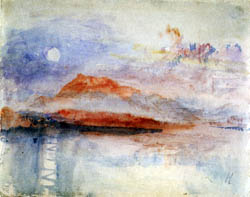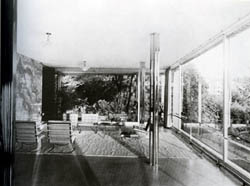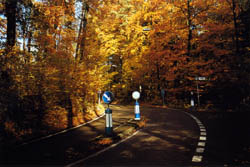Gardens of Experience
 She felt the honest pride and complacency which her alliance with the present and future proprietor could fairly warrant, as she viewed the respectable size and style of the building, its suitable, becoming, characteristic situation, low and sheltered – its ample gardens stretching down to meadows washed by a stream, of which the Abbey, with all the old neglect of prospect, had scarcely a sight – and its abundance of timber in rows and avenues, which neither fashion nor extravagance had rooted up… It was just what it ought to be, and it looked what it was – and Emma felt an increasing respect for it, as the residence of a family of such true gentility, untainted in blood and understanding. She felt the honest pride and complacency which her alliance with the present and future proprietor could fairly warrant, as she viewed the respectable size and style of the building, its suitable, becoming, characteristic situation, low and sheltered – its ample gardens stretching down to meadows washed by a stream, of which the Abbey, with all the old neglect of prospect, had scarcely a sight – and its abundance of timber in rows and avenues, which neither fashion nor extravagance had rooted up… It was just what it ought to be, and it looked what it was – and Emma felt an increasing respect for it, as the residence of a family of such true gentility, untainted in blood and understanding.
(Emma, Jane Austen 1815)
In 18th century England there emerged a new synthesis of landscape and building. Important points of origin were Lord Burlington's house and garden at Chiswick in west London , designed by Burlington and William Kent. Lord Burlington was at the centre of an important and privileged intellectual circle that looked back to antiquity for a model of how to dwell upon the land poetically, and equally how to establish a place for landscape within the ideas of high culture. Their vision was informed by the ancient writings of Vitruvius and Pliny and by the 17th century French painters Poussin and Claude. William Kent's landscapes at Chiswick, Stowe and Rousham were highly erudite narratives of axes and symbolism, where each turn would bring its own particular delight and view, and where every sculpture referred both to antique mythology and to prominent contemporary figures.
Over the course of the early 19th century, in the designs of Capability Brown and Humphry Repton, the country house and its estate became informed by a more sensual and pragmatic sensibility. The importance of allegory receded and was replaced by an almost phenomenological regard for the specific conditions of the site and a sensitivity to use and to the ambitions of the client. The quote from Jane Austin's ‘Emma' describes a place where social status and everyday inhabitation, where existing topography and artifice, are engaged in a spatial ensemble of perfect grace and balance.
 These architectural themes were not limited to the design of houses for rich people, and did not end in the 19th century English countryside. This specifically English quality of spatial invention would exert a major influence on the wider development of 19th century architecture. The work of Schinkel in Germany , Webb in England , and others would introduce a concern for spatial experience into the interior of the house. These architects would also extend an engagement with the specific so that it encompassed the individual social and tectonic potential of each project. The interwar work of architects like Loos and Mies van der Rohe represent a high point in this line of enquiry, where ‘gardens of experience' become ‘landscapes of the interior'. These architectural themes were not limited to the design of houses for rich people, and did not end in the 19th century English countryside. This specifically English quality of spatial invention would exert a major influence on the wider development of 19th century architecture. The work of Schinkel in Germany , Webb in England , and others would introduce a concern for spatial experience into the interior of the house. These architects would also extend an engagement with the specific so that it encompassed the individual social and tectonic potential of each project. The interwar work of architects like Loos and Mies van der Rohe represent a high point in this line of enquiry, where ‘gardens of experience' become ‘landscapes of the interior'.
This semester we will pick up a number of these themes. Not out of any sense of nostalgia, but rather because we feel that these are qualities that could enable contemporary architecture to retain its artistic authority and culturally relevance, at a time increasingly characterised by the abstract pressures of the global economy.
 We will work within the grounds of Chiswick House, in and amongst the trees, axes, temples and sculptures of Burlington and Kent 's masterpiece. The park will be undergoing a major restoration project in the next few years, and we will have access to the extensive literary and archaeological material that forms the basis for this work. While benefiting from this wealth of knowledge, the work of the studio will not be overly constrained by historic conservation policy. Rather, the main guiding force should be the artistic sensitivity and judgement of each student in developing ideas for landscapes and for pleasure buildings that resonate with and interpret the history and the experience of Chiswick. Before we go to Chiswick, we will undertake a short project in Zürich which will introduce the themes of the semester and begin to develop methods of representing an architecture of experience. We will work within the grounds of Chiswick House, in and amongst the trees, axes, temples and sculptures of Burlington and Kent 's masterpiece. The park will be undergoing a major restoration project in the next few years, and we will have access to the extensive literary and archaeological material that forms the basis for this work. While benefiting from this wealth of knowledge, the work of the studio will not be overly constrained by historic conservation policy. Rather, the main guiding force should be the artistic sensitivity and judgement of each student in developing ideas for landscapes and for pleasure buildings that resonate with and interpret the history and the experience of Chiswick. Before we go to Chiswick, we will undertake a short project in Zürich which will introduce the themes of the semester and begin to develop methods of representing an architecture of experience.
The studio will be led by Adam Caruso and Peter St John in collaboration with Daniel Bosshard and Meritxell Vaquer. The assistant will be Oliver Lütjens. Adam or Peter will be in the studio at least one full day per week, and the other three members of the team will be present for both studio days.
The studio will lead a trip to England for the semester week where we will visit a number of country houses from the 18th and 19th centuries. We will meet with a range of people whose work is engaged by these great estates, these will include historians, gardeners, ecologists, and estate owners. It is not mandatory to go on the semester week trip if you choose this studio, but it is recommended.
Images:
1) The Rigi : Pink with the full moon. JMW Turner 1841.
2) Tugendhat House, Brno, Mies van de Rohe 1929.
3) Settlements Agglomerations, Fischli & Weiss 1993.
Arbeitsort: HIQ CO 1/2
Anzahl Studierende : 28
Aufgabentyp: O/e
Einführung : Dienstag 25. September 2007, 10Uhr HIQ CO 1
Download: PDF Dokumentation Gastpdozenten Adam Caruso/Peter St John : PDF
21.08.2007 webmaster@arch
|


